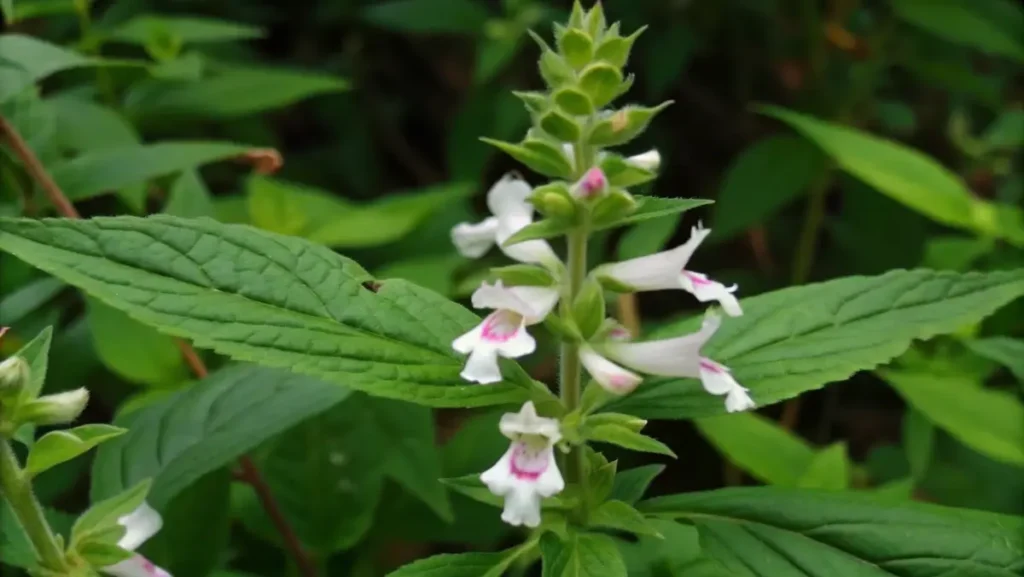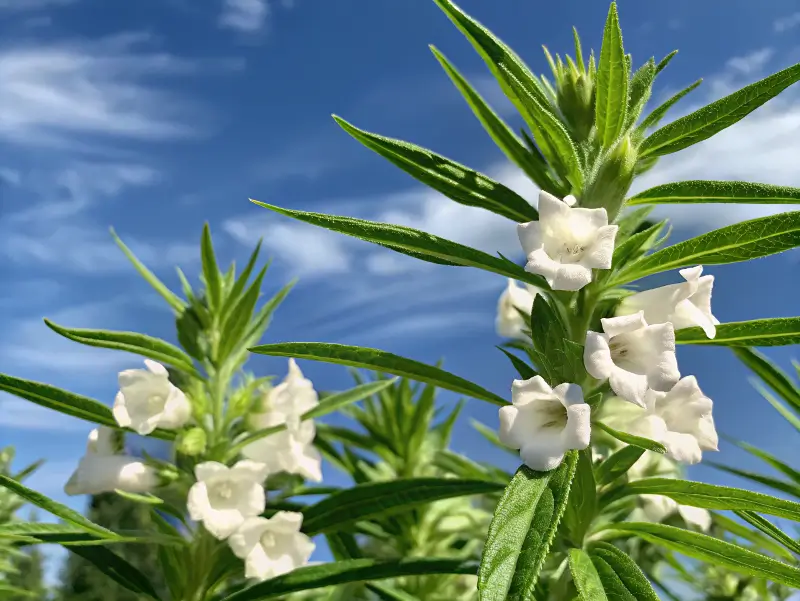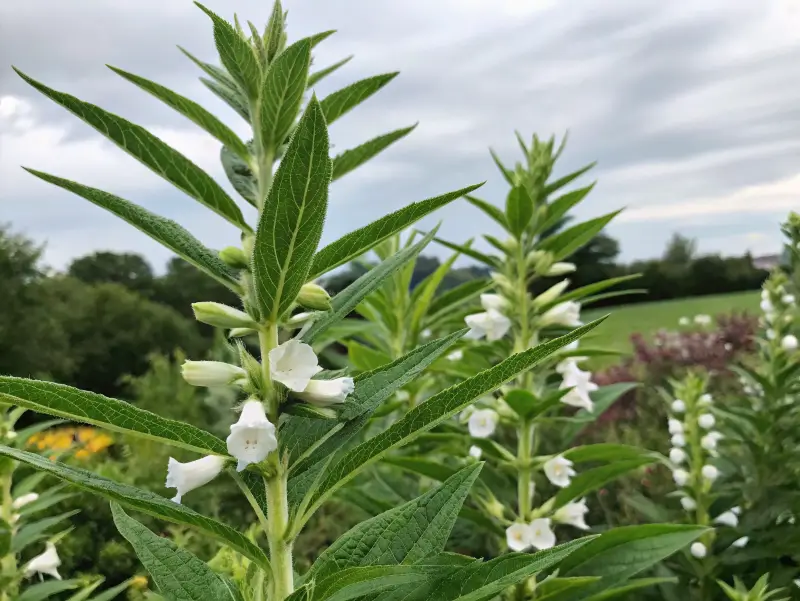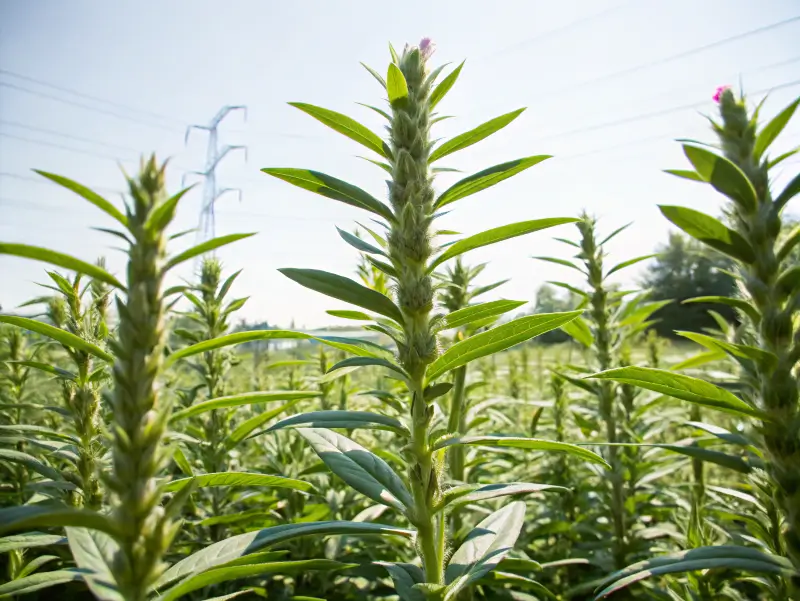
Curious about growing sesame seeds at home? This article reveals everything about picking the right variety, caring techniques, and using sesame. If you wonder, Can I grow sesame at home?, you’ll see how easy it can be. Explore weather tips, shortcuts, plus fun ways to enjoy your harvest. It’s simpler than you might expect! Start your journey and savor success.
Table of Contents
Can I Grow Sesame at Home? Understanding the Basics
What is Sesame?
I’ll be honest: I always thought sesame plants were super fancy because of sesame bagels and burger buns. However, they’re just friendly, warm-season crop buddies that thrive where it’s sunny and well-drained.
- Sesame has been cultivated for centuries, mainly for its nutty seeds.
- These seeds come in various colors like white, black, or brown.
- The plant itself doesn’t need too much maintenance but does love sunshine.
Even if you’re a beginner, you’ll find sesame a pretty chill plant to grow, especially if your climate stays warm for a decent chunk of the year. In some regions, folks mention that sesame deals well with moderate heat waves, as long as you keep watering under control.
Importance of Homegrown Sesame
By the way, home gardening tips often highlight how satisfying it feels to watch seeds sprout into tall, leafy wonders. Personally, I enjoy:
- Knowing exactly what went into my plants.
- Tasting fresh, chemical-free seeds.
- Experimenting with different ways to use sesame seeds in the kitchen or for skincare.
If you’ve ever wondered, Can I grow sesame at home?, the short answer is: absolutely. This question, “Can I grow sesame at home?” doesn’t have to remain a mystery—now you know it’s easier than you thought. You just need a sunny spot, a bit of patience, and a love for new gardening adventures.
Selecting Suitable Sesame Varieties for Home Growing
Types of Sesame Seeds
When I started, I didn’t realize there’s more than one type of sesame. Some are black, while others are creamy white or brown. Although each variety has a slightly different flavor, they all appreciate:
- Warm, sunny spots
- Well-draining soil
- Regular, moderate watering
Try a couple of types if you’re feeling adventurous. Sample a few varieties if you’re feeling bold. Every option might provide its own unique hue or slight flavor variation. I once planted both white and black seeds in the same patch just to compare their growth patterns—they both did great, but I’ll admit I favor the intense nuttiness of black sesame.
Heirloom vs. Hybrid Varieties
Heirloom seeds can pass down consistent traits like color or taste. Hybrid varieties come from crossing different strains for sturdier plants or specific traits. It all boils down to what you like:
- Heirloom: often cherished for tradition and flavor.
- Hybrid: sometimes faster-growing or more disease-resistant.
Either choice typically thrives in a warm backyard or container. Many folks also ask me, Can I grow sesame at home? given all these varieties. The truth is, any variety can work well if you have the right conditions. Just remember that certain hybrids may have minor differences in pod size or the time it takes them to reach harvest.
Preparing the Soil and Garden Space for Sesame Plants Ideal Soil Conditions

In reality, sesame isn’t very demanding, yet it flourishes most effectively in sandy or loamy soil with adequate drainage.
Adding organic matter—like compost—can give it a balanced environment by:
- Boosting moisture retention without waterlogging
- Providing nutrients for a healthy start
- Improving overall soil texture
Most sesame plants do best with a pH near 6.0 to 7.5, so using a soil test kit might help. So next time you ask, Can I grow sesame at home?, remember that starting with the right soil is half the journey. I occasionally add a bit of well-rotted manure just to give the soil an extra nutrient punch, especially in early spring.
Container Gardening for Sesame at Home
Space is often limited if you live in an apartment or have a small yard. Don’t sweat it! I’ve grown sesame in pots with no issues by:
- Picking a container at least 12 inches deep
- Mixing in quality potting soil and compost
- Watering more often (containers dry out faster)
Container gardening provides an easy method for raising sesame seeds on a balcony or patio. It’s surprisingly fuss-free once you get that watering routine down. Just be sure to place your container in a spot that gets a good six or seven hours of direct sunshine. Also, rotating the pot every week or so can help the plant grow more upright and balanced.
Planting and Making Successful Germination More Likely
Seed Sourcing and Pre-Planting Preparations
Where to find seeds?
- Garden centers
- Online stores
- Trading seeds with friends
Before planting, I like to soak the seeds overnight in lukewarm water. This little trick:
- Softens the seed coat
- Speeds up germination
- Boosts the overall success rate
That short soak saves me a lot of worry. If someone asks me, Can I grow sesame at home?, I’d say absolutely—just keep them warm and watch them sprout. Plus, I tried skipping the soak once and noticed the sprouts appeared more slowly. So I trust that simple presoak to give me a head start.
Germination Tips
Once your seeds are ready:
- Plant them about half an inch deep
- Keep the soil gently moist, not drenched
- Maintain warmth—sesame hates the cold
If spring nights are still chilly, wait until frost is gone or start seeds indoors under a grow light. It’s a huge help if you live somewhere with unpredictable weather. Personally, I place a clear dome over my seed tray for a greenhouse effect and crack it slightly for airflow—it seems to boost sprout speed nicely.
Best Practices for Caring for Your Homegrown Sesame

Proper Watering and Fertilizing Schedules
Let’s face it: watering can be tricky. I’ve definitely messed up by overwatering, which can lead to rot. Here’s how I handle it now:
- Soak the soil thoroughly, but let the surface layer dry out a bit before you water again
- Skip watering for a day or two if there’s heavy rain
- Use a finger test—stick your finger into the soil one inch; if it’s dry, water
For fertilizing, a light application of balanced, organic fertilizer or well-rotted compost works wonders. My routine includes:
- Adding a thin layer of compost every couple of weeks
- Occasionally using compost tea or fish emulsion (sparingly)
The next time you wonder, Can I grow sesame at home?, you’ll be prepared with a solid watering and fertilizing plan. I’ve found that these plants respond best to consistency—you don’t have to go overboard but do keep an eye on leaf color and overall vigor.
Managing Pests and Diseases Organically
If you see leaves with holes or nasty spots:
- Spray aphids or whiteflies off with water
- Try neem oil if pests persist
- Keep your soil healthy—strong plants resist pests better
Companion planting helps. For instance, marigolds can repel unwanted bugs. If you need more tips, you can check out Sesame Plant. A friend of mine also swears by planting basil nearby—apparently, the aroma confuses certain pests. It can’t hurt to experiment with other companion herbs as well.
Optimal Harvesting Techniques for Homegrown Sesame
Whenever I’m asked, Can I grow sesame at home? I share my harvesting tips right away.
Recognizing Harvest Time
You’ll know it’s time to harvest when:
- Leaves start turning yellowish
- Pods appear dry or slightly brittle
- Seeds rattle when you gently tap the pods
Timing can vary—some pods might mature faster than others, so stay alert. Once you see how easy harvesting can be, you’ll realize the answer to “Can I grow sesame at home?” is a definite yes. One year, I tried rushing the harvest because I was too excited, and ended up with pods that weren’t fully dry. Lesson learned—patience pays off.
Drying, Storing, and Processing
After picking, let the pods dry for a few days in a shady spot. That makes opening them far easier:
- Gently crack open the pods
- Collect the seeds in a clean container
- Seal them in tightly closed containers and keep them somewhere cool and out of direct light.
It’s super satisfying to use your own sesame seeds in a recipe. Talk about a personal touch! I especially love sprinkling fresh sesame seeds on homemade flatbreads—it adds a crunchy twist and a nutty aroma that you just can’t beat.
Avoiding Common Mistakes in Home Sesame Growing

Overwatering or Underwatering Pitfalls
Excessive moisture can trigger root rot, whereas insufficient watering causes your plants to dry out. To dodge both:
- Water when the top inch of soil is dry
- Throw on some mulch to keep moisture in
- Check drainage holes in containers
So if you’re still asking, Can I grow sesame at home?, watch for these mistakes and you’ll be golden. If you live in a place with scorching hot summers, consider a quick morning watering schedule—sesame tends to appreciate that early burst of moisture before the day’s heat sets in.
Neglecting Soil Quality and Plant Health
Sesame has an easier time growing in loose, nutritious soil. Skimping on soil prep can be a big mistake:
- Always mix in compost or well-rotted manure before planting
- Watch for early signs of plant stress
- Act fast if pests appear
I once planted sesame in some poorly drained clay soil, and the growth was painfully slow. A few weeks later, I added compost and loosened the dirt, which made a world of difference in my harvest.
Innovative Uses and Benefits of Homegrown Sesame
Culinary Delights and Recipes
If you’re a foodie like me, you’ll love turning your homegrown sesame into:
- Homemade tahini for hummus
- A crunchy topping on salads or stir-fries
- A flavorful addition to bread or muffins
By now, I’ve hopefully answered your question, “Can I grow sesame at home?”—especially if you’re excited about new recipes and health perks. I’ve even blended toasted sesame seeds into a sauce with soy and garlic for a quick stir-fry drizzle. It tastes fantastic over grilled veggies!
Skincare, Health, and Other Creative Applications
Sesame oil can work wonders on your skin. I’ve also used it:
- As a hair mask for extra shine
- As a light moisturizer for especially dry skin
- For mild oil pulling (some folks swear by it for oral health)
Plus, sesame seeds pack healthy fats and minerals, giving your diet a nutritious boost. A friend of mine even made a small batch of homemade soap infused with sesame oil, claiming it left his skin super soft and hydrated.
FAQs About Growing Sesame at Home
When I see folks googling, “Can I grow sesame at home?”, these FAQs speak to the heart of that question. Because, seriously, “Can I grow sesame at home?” is the big question on everyone’s mind.
Can Sesame Grow in Cooler Climates?
It helps to have sunshine, but you can try growing sesame seeds in cooler northern zones by:
- Starting seeds indoors in early spring
- Waiting until nighttime temps are above 50°F before moving them outside
- Using row covers or a small greenhouse
For more climate info, here’s a helpful page on Can sesame grow in the US?. One tip is to pick the earliest-maturing sesame variety you can find if your growing season is shorter.
How Long Does It Take to Grow Sesame Seeds at Home?
Most varieties need:
- 90 to 120 days of warm weather
- Steady temperatures, avoiding big swings
Plan around summer heat or find quicker-maturing types if your season is short. Personally, I’ve found that starting seeds indoors extends the growing window, which can be a game-changer for cooler climates.
Do Sesame Plants Require Full Sun?
Yes. Sesame adores direct sunlight. Partial shade can work if temperatures remain warm, but full sun is ideal for top-notch growth. I’ve noticed the leaves stay greener and pods develop more uniformly when the plants get a good six to eight hours of direct sunlight.
Can I Grow Sesame Indoors?
You can, but:
- You’ll need a strong grow light
- Tall plants demand plenty of vertical space
- Outdoor growing usually yields bigger, heartier plants
I once grew a few indoors, and they survived, but they truly thrived once moved to my balcony. If indoors is your only option, be ready to manage lighting and humidity for the best results.
Conclusion and Final Thoughts
Recap of Key Points
So, if you’ve been asking yourself, Can I grow sesame at home?—the big answer is yes! All it really takes is:
- Warmth and plenty of sunlight
- Loose, well-draining soil with compost
- Moderate watering and a watchful eye for pests
Follow these steps, and you’ll likely gather a steady bunch of seeds for your favorite recipes. So, whenever the thought arises—“Can I grow sesame at home?”—just grab a few seeds, find a sunny spot, and go for it!
Encouragement for Aspiring Home Gardeners
Gardening is a journey. I’ve had seedlings that thrived and some that struggled. That’s life, right? But it’s totally worth it when you’re sprinkling your own fresh sesame seeds onto roasted veggies. If you want zone-specific info, check the USDA’s Plant Hardiness Zone Map to see if sesame fits your region. Happy planting—may your sesame harvest be awesome!
And remember, if anyone ever asks you again, “Can I grow sesame at home?”, you can confidently say: “Yes, and it’s easier than you’d expect!” Embrace the fun of trying something new—you’ll almost certainly find it both addicting and rewarding.

1 thought on “Can I Grow Sesame at Home?”
Comments are closed.